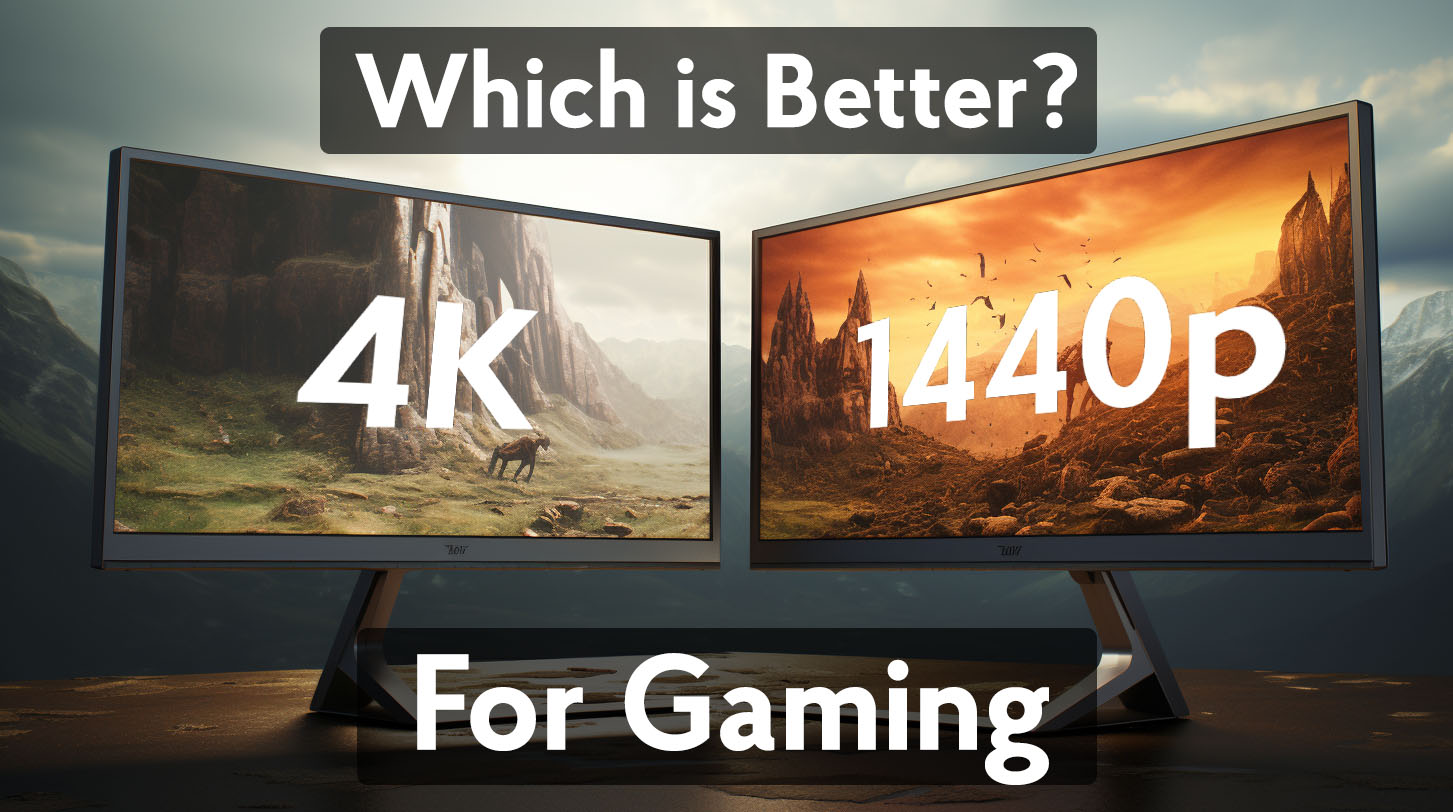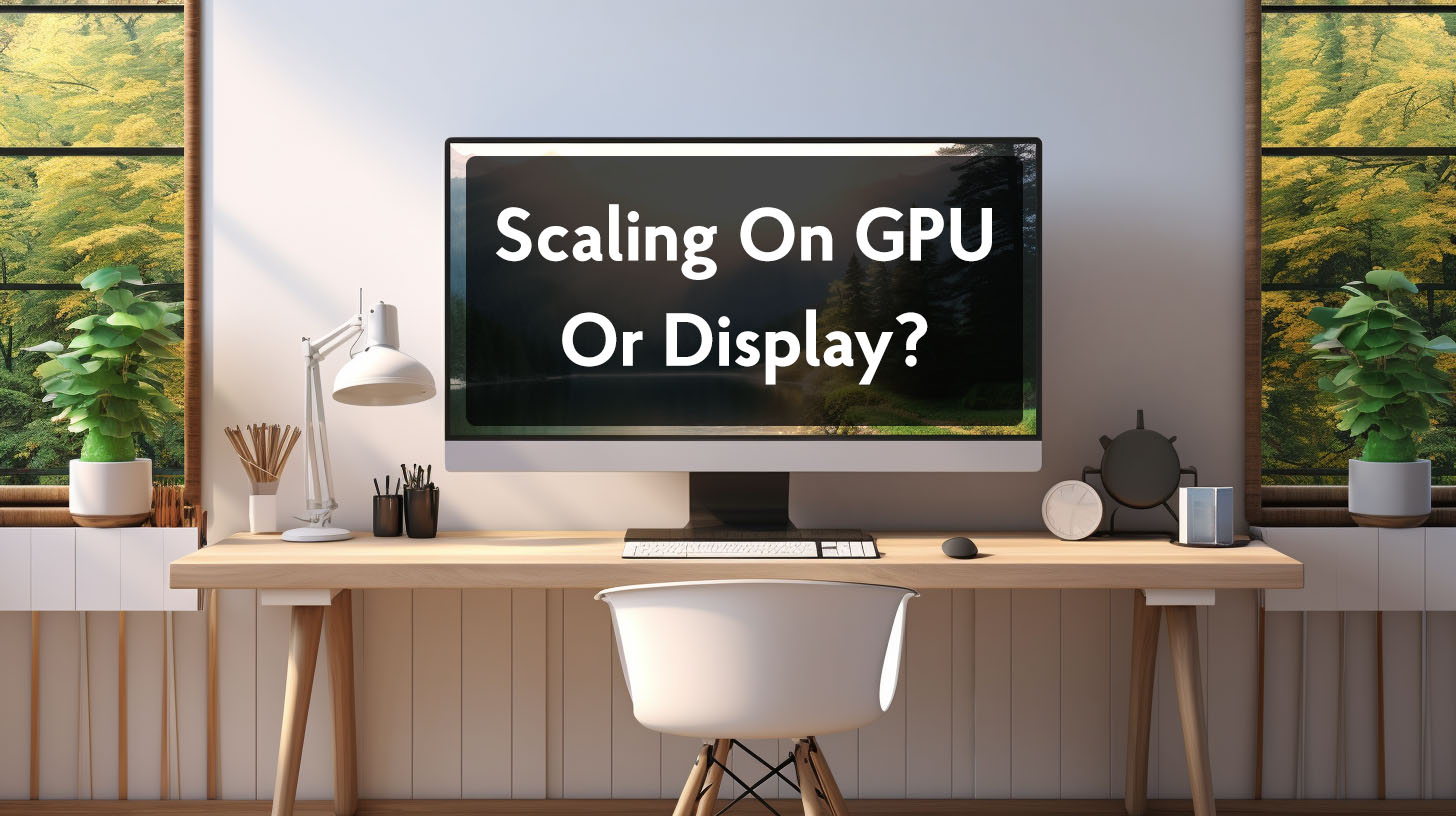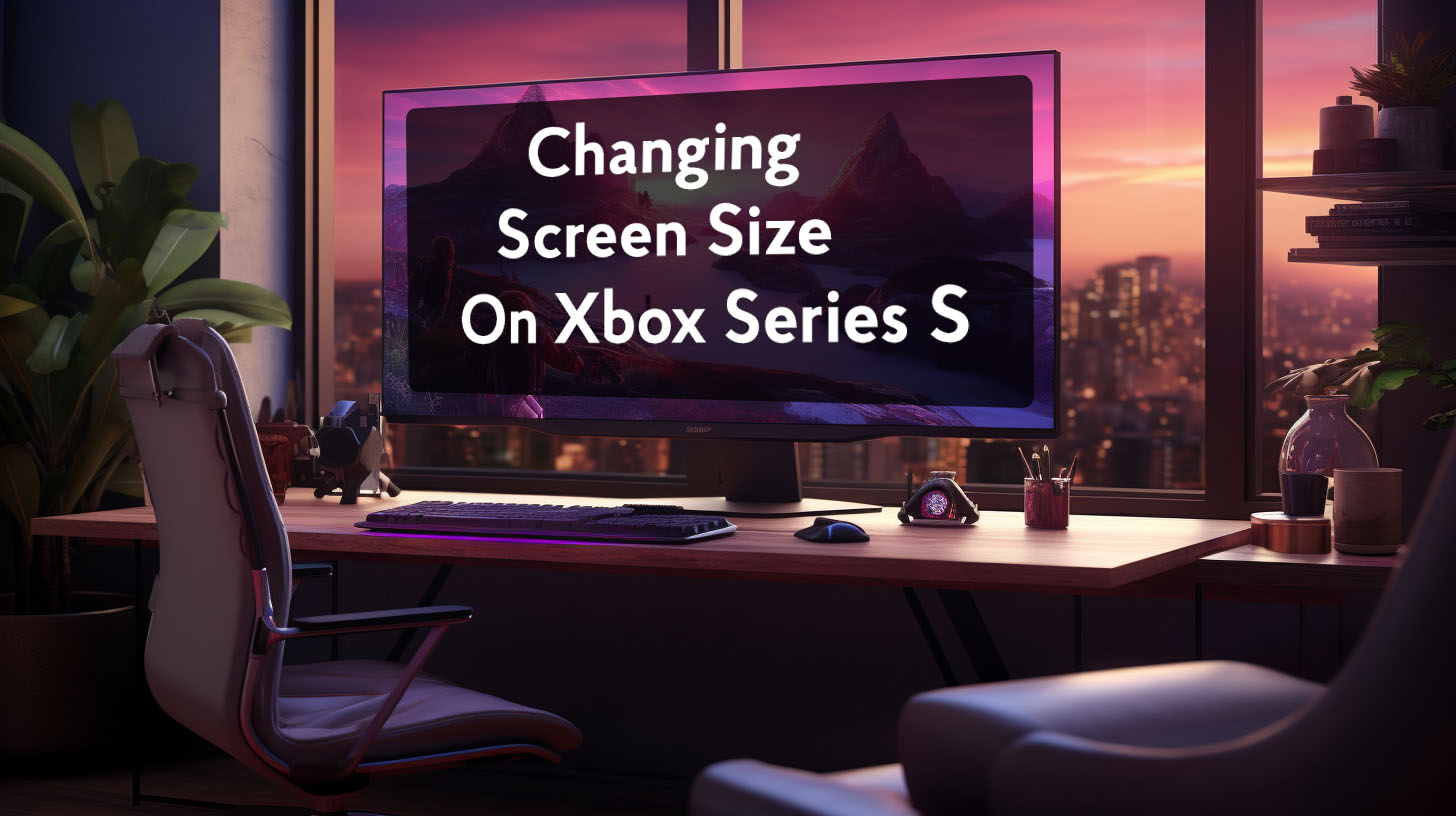While Full HD 1080p was once the gold standard, 1440p and even 4K resolutions are now viable options. Of these, 4K offers the most tantalizing promise: incredibly sharp visuals that can bring out details you never noticed before.
But does the reality live up to the hype for PC gamers?
4K Resolution for Gaming
There’s no denying the visual impact of 4K, particularly on larger screens. Packing over 8 million pixels into a 32 inch monitor provides far greater pixel density than lower resolutions, leading to crisper text and intricate in-game textures.
Stunning Visuals, Demanding Performance
Tiny details on character models pop out, and subtle environmental cues in the distance become clearer. This helps create a more immersive experience overall.
But all those extra pixels take brute computing force to render smoothly. Running the latest games at high frame rates and maximum settings in 4K requires top-tier graphics cards like the RTX 3080 or RX 6800 XT.
Lesser GPUs struggle to maintain playability without compromises, especially in demanding titles. Smooth 4K performance demands costly upgrades that not all can afford.
Bigger Screens Show More Details
4K resolution comes into its own on monitors larger than the typical 27 inch models. At 32 inches and up, the sheer quantity of pixels becomes very apparent, revealing all the hard work developers put into asset creation. Users report noticing foliage and architectural flourishes in-game they never spotted in lower resolutions.
But smaller 4K screens still provide an edge in visual clarity over 1440p rivals. Their higher pixel density makes text crisper for everyday desktop use.
Though some employ upscaling, consoles also benefit from 4K displays. Their broad audience means interface elements and textures are optimized for 3840×2160 resolution.
Upscaling Saves the Day
Recognizing the performance burden of 4K, Nvidia, AMD and developers like Nixxes have cooking up clever solutions. DLSS, FSR and other upscalers employ a mix of temporal data and intelligent algorithms to reconstruct a smooth 4K image from a lower resolution render.
When paired with the right GPU, features like DLSS Quality can deliver fluid 4K frames with minimal image degradation. It brings demanding AAA experiences like Cyberpunk 2077 and Marvel’s Spiderman within reach of mid-range hardware. As the tech improves, fewer visual compromises will be required to enjoy 4K’s benefits.
While 4K gaming presents challenges, its stunning fidelity keeps enticing players to upgrade. Smart upscaling tech helps ease the transition by reducing the hardware needed. As GPUs get more powerful, 4K will become the new standard for PC enthusiasts who want to fully experience virtual worlds in the highest quality possible.
But for now, it remains primarily the domain of those chasing cutting-edge visuals without compromise.
1440p for Gaming
Offering a great balance between performance, visuals and price, 1440p hits a sweet spot for enjoyable high frame rate gaming. Let’s examine why this resolution shines.
The Competitive Gamer’s Friend
For those who favor buttery smooth gameplay above all else, 1440p paired with a high refresh rate monitor is a match made in heaven. This resolution doesn’t require as much GPU horsepower to hit 120 FPS or 144 FPS target frame rates in multiplayer titles as 4K. You can achieve superb motion clarity without needing the latest $1000+ GPU.
Esports players tend to opt for 24″ to 27″ sized 1440p monitors to maximize fluidity. While 4K can technically drive high frame rates with the right gear, ultra low response times for 1440p displays give them an edge currently. When every millisecond counts, 1440p makes chasing peak performance more affordable.
Scales Better on Mainstream Monitors
Another bonus of 1440p is it lines up nicely to popular monitor sizes without unusual scaling or stretching required. On a 27″ screen, 1440p looks sharp and crisp thanks to its ~109 PPI pixel density compared to ~81 PPI on 1080p 27″ models. The jump to 4K only raises density to ~163 PPI, less impactful.
32″ monitors can also run 1440p well, keeping things large while retaining nice image quality. Since 1440p natively matches horizontal and vertical dimensions of monitors, you avoid awkward scaling issues seen when running lower resolutions. It just works.
Ultrawide Immersion
For the ultimate in wraparound visuals, 1440p in an ultrawide aspect ratio like 3440×1440 offers stunning vistas. The same pixel height as standard 2560×1440 stretched over a curved 34″ screen surrounds you in your favorite games. Racing titles really come alive with your peripheral vision filled.
While 4K ultrawides exist, the brute force required to run them at over 60 FPS even with a top-end GPU makes them difficult to recommend. The 1440p option delivers an engrossing experience that runs buttery smooth on far more systems. Ultrawide 1440p monitors remain a go-to immersion tool for many gamers.
Of course, opinions vary based on use cases and personal preference. But for those chasing high frame rates in popular competitive games or wanting to game affordably at higher-than-1080p resolution, 1440p hits a sweet spot. It brings tangible visual benefits without the sky-high cost of 4K, offering a pleasing middle ground that should satisfy many PC gamers.
4K vs 1440p: Which is Better?
The eternal resolution debate rages on among PC gamers – is 1440p or 4K better for gaming? As with most things, there are good arguments on both sides. While 4K offers stunning visual fidelity, 1440p delivers buttery smooth frame rates. The real answer comes down to balancing your budget, priorities and use case.
Hardware Considerations
The most practical consideration is pairing your resolution with GPU power that can drive it properly. Underpowered cards struggle at 4K, demanding high-end models like RTX 3080s to hit smooth frame rates in demanding games. More affordable GPUs readily tackle 1440p gaming with headroom to spare.
If your budget only allows midrange cards, 1440p makes sense for enjoying high refresh gameplay now. You can always upgrade to 4K later when GPU prices fall. Conversely, buyers going all-out on the latest flagship cards may feel shortchanged without 4K’s incredible detail. There’s no definitive threshold, rather try matching your target resolution to graphics power.
Personal Priorities
Besides hardware, also weigh your personal priorities as a gamer. Those who play fast-paced competitive multiplayer titles favor frame rate over visuals, making 1440p monitors with 144Hz-240Hz refresh rates ideal. If you mainly play cinematic single player games, 4K’s added clarity better suits a more immersive experience.
Some also prefer 4K for desktop use, benefiting work and content creation. Ultimately there’s no universally superior choice, but rather what aligns best with your needs and sensibilities as a gamer. Keep an open mind and try both to see what subjectively looks and feels best for the games you play.
Bang for Your Buck
Looking at the price to performance ratio, 1440p currently offers better value for most gamers. While 4K monitor prices have dropped, they still demand a premium over quality 1440p displays. The extra money may be hard to justify if your GPU won’t adequately drive 4K anyway.
With the right graphics card, 1440p presents a sensible middle ground. It’s an affordable resolution that still provides a noticeable jump from 1080p, with support for high refresh rates. For cost-conscious buyers, 1440p checks more boxes as the bang-for-buck choice.
Conclusion
There’s merit to both sides here. While 4K is enticing on paper, it may exceed practical needs for many. Carefully weighing personal and financial factors makes it easier to find the best fit.
For most buyers today, 1440p likely brings the ideal mix of visual upgrade and smooth performance at a fair price.
But as GPU tech advances, 4K’s time to shine draws inevitably closer. There’s no one right answer, only the one that’s right for you.




